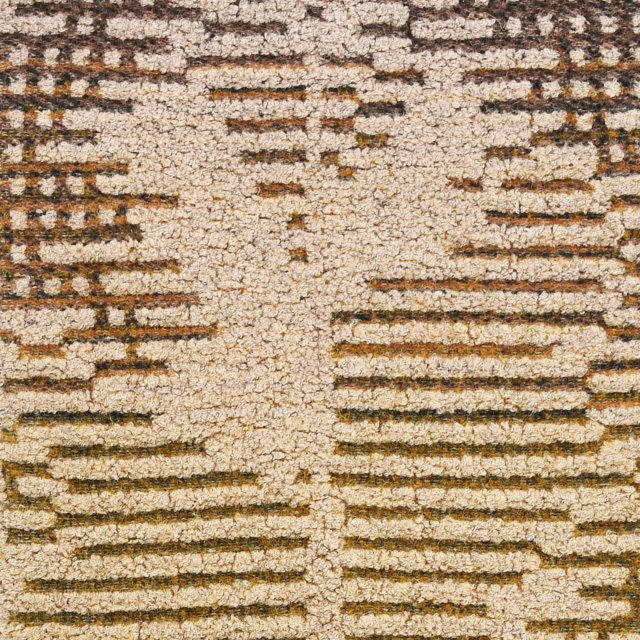‘Today’s production systems do little to support a sense of relationship
either between people or nature,
they care little about how or by whom and in what conditions products are made,
or the speed with which they are consumed’((Fletcher, K. (2008) Sustainable fashion and textiles: design journeys. London: Earthscan: 127.)).
MASS PRODUCTION is dominating the current system, resulting in an unbalanced homogeneous marketplace. Cheap overseas labour has caused manufacturing to move abroad, creating ‘a monoculture of globalized production dominated by the power, concentration and international reach of big businesses'((Fletcher, K. (2008) Sustainable fashion and textiles: design journeys. London: Earthscan: 141.)). Fast fashion is ‘designed to be cheap, easy and rapid to produce, it draws on low-cost materials and labour, short lead times, and efficient large-volume production'((Corstanje, C. (2013) ‘Sustainable design as a powerful force to change’. In: Brand, J. and Teunissen, J. eds. A fashion odessey: progress in fashion and sustainability. Arnhem: ArtEZ Press: 275.)). Cheap fashion is often disposable fashion, because there is a lack of consumer attachment, therefore encouraging over-consumption and not satisfying fundamental human needs and well-being. Consumers are often grouped together in target markets, rather than as individuals. This reduces diversity, choice and is aesthetically limiting. A narrow target market reduces personal expression and individuality, as well as creating unachievable ideals that people may aspire to. ‘If we are to sustain people, we need to look more closely at individuals… By thinking of people as a group, the opportunities for sustainable design narrow.'((Hethorn, J. (2008) ‘Consideration of consumer desire’. In: Hethorn, J. and Ulasewicz, C. eds. Sustainable fashion – why now?: a conversation about issues, practices, and possibilities. New York: Fairchild books: 55-56.)).
HANDCRAFT around the world has been affected by the production of cheap mass produced goods. It is difficult for handmade techniques to compete with industrialised processes. When I was developing my collection of knitted homeware, I designed and made the first samples on my own hand-operated knitting machine. The technique I used was not easily transferable to automated machines, so when looking for production within the UK I just faced dead ends, as most local manufacturers don’t produce anything by hand as it is not financially viable due to time and labour costs. Therefore I started looking at production options in Peru, as they have a rich history in knitted textiles. Many of the suppliers still work with hand-operated machines, however I was aware that there was beginning to be a shift away from handmade to automated. The more competitive suppliers were keen to transfer the technique I required onto an automated machine, as costs would come down if I produced large quantities. I was faced with the question of whether I should help sustain traditional knitted craft skills, or support the move towards a globally competitive alternative, based on the model of producing large quantities.
MAKING doesn’t exist that much anymore. The industrial revolution eradicated the skill of craftsmanship((Reichental, A. (2014) What’s next in 3D printing? [online video] TED: Available from: http://www.ted.com/talks/avi_reichental_what_s_next_in_3d_printing [Accessed 5 Dec 2014].)), and the loss of traditional small scale production options has made it very challenging for independent textile designers to establish themselves and be competitive. They face problems such as; not being able to meet the production minimums demanded, finding reliable suppliers willing to work on small orders, and being unable to achieve economies of scale to break-even and compete with big businesses. I feel that the current system is too heavily weighted towards supplying the mass. ‘A properly scaled production system allows a diversity of alternatives to thrive and means that wealth is not concentrated in the hands of a few'((Fletcher, K. (2008) Sustainable fashion and textiles: design journeys. London: Earthscan: 141.)).
CRAFTIVISM is activism that uses craft and ‘blends political questions and practical action'((Fletcher, K., Grose, L. & Hawken, P. (2012) Fashion and sustainability: design for change. London: Laurence King Publishing: 150.)). ‘Betsy Greer coined the term in 2003, and she defines it as, “a way of looking at life where voicing opinions through creativity makes your voice stronger, your compassion deeper and your quest for justice more infinite.”‘((Craftivist collective (2014) What is craftivism anyway? [Online] Available from: http://craftivist-collective.com/about/ [Accessed 5 Dec 2014].)). Craft can be political and democratic, it ‘can be seen to convey a sense of restraint in consumption, a speed limit and volume cap, for after all you can only consume as much, as fast, as the craftsperson can produce'((Fletcher, K., Grose, L. & Hawken, P. (2012) Fashion and sustainability: design for change. London: Laurence King Publishing: 149.)). Craft can help raise awareness, question and challenge issues such as over-consumption, unfair and unsafe conditions for textile workers, or environmental impacts.
HACKING within a fashion context can ‘enhance the promise of engagement with a garment by challenging the control and power of the fashion system'((Fletcher, K., Grose, L. & Hawken, P. (2012) Fashion and sustainability: design for change. London: Laurence King Publishing: 150.)). Amy Twigger Holroyd is a knitwear designer, maker and researcher who runs an experimental knitwear label, Keep and Share((Twigger Holroyd, A. (2014) Keep and Share [Online] Available from: http://www.keepandshare.co.uk/ [Accessed 25 Nov 2014].)), that questions sustainability and the fashion system. She describes her work as ‘tinkering'((Twigger Holroyd, A. (2014) Keep and Share: tinkering [Online] Available from: http://www.keepandshare.co.uk/about-keep-share/tinkering [Accessed 5 Dec 2014].)) and is interested in developing techniques and strategies that reinvent garments, rather than creating new ones. A technique she has developed is called ‘stitch-hacking'((Twigger Holroyd, A. (2014) Keep and Share: stitch-hacking [Online] Available from: http://www.keepandshare.co.uk/making/stitch-hacking [Accessed 5 Dec 2014].)) where by she modifies an existing garment by laddering and reforming the stitches, based on a repair technique used by knitters. She believes that by ‘tinkering’ with a garment on a micro level can have large-scale change, as it allows us to participate in fashion through craft, rather than consuming ready-made items, which can be empowering and enables us to change the things around us((Twigger Holroyd, A. (2014) Keep and Share: tinkering [Online] Available from: http://www.keepandshare.co.uk/about-keep-share/tinkering [Accessed 5 Dec 2014].)).

Amy Twigger Holroyd stitch-hacked gansey (added cable on front and names on sleeves). Photo from: Twigger Holroyd, A. (2014) Keep and Share: stitch-hacking [Online] Available from: http://www.keepandshare.co.uk/making/stitch-hacking [Accessed 5 Dec 2014].

Amy Twigger Holroyd stitch-hacked knit vest (added text). Photo from: Twigger Holroyd, A. (2014) Keep and Share: stitch-hacking [Online] Available from: http://www.keepandshare.co.uk/making/stitch-hacking [Accessed 5 Dec 2014].
TECHNOLOGY and the move away from handcrafts to machinery, can be seen as negative when you consider the loss of traditional skills and the lack of diversity to meet the needs of consumers. ‘We aren’t designing for individuals if over 60 percent of people report that they can’t find clothes to fit and consumers often complain that they have a hard time finding styles that they feel and look great in'((Hethorn, J. (2008) ‘Consideration of consumer desire’. In: Hethorn, J. and Ulasewicz, C. eds. Sustainable fashion – why now?: a conversation about issues, practices, and possibilities. New York: Fairchild books: 56.)). However, if technology is used to satisfy individual needs, rather than target markets, it allows us to address human desires and hopefully increase user well-being. Recent developments in technology, such as digital and 3D printing, may enable custom-made design and small scale production to thrive again. Avi Reichental believes that 3D printing is going to ‘connect us with our heritage and usher in a new era of distributed manufacturing that is actually based on digital fabrication'((Reichental, A. (2014) What’s next in 3D printing? [online video] TED: Available from: http://www.ted.com/talks/avi_reichental_what_s_next_in_3d_printing [Accessed 5 Dec 2014].)). Technology has the potential to bring individuality back to design through customisation. However, there is current debate over ‘what is the impact of new technologies on quality and value and where does this leave the traditional craft maker?'((Textiles Environment Design (2014) Debate: new technologies are killing hand-made craft [Online] Available from: http://blog.tedresearch.net/2014/11/19/debate-new-technologies-are-killing-hand-made-craft/ [Accessed 5 Dec 2014].)). The speed of digital technology is fast and there is a risk the slowness of handmade crafts will not survive. In a fast paced world people are becoming used to immediacy and are losing patience, or unable to find the time for slower activities. It is worth considering whether there will be an appreciation of value or emotional connection, leading to product longevity, if we can get things too quickly.
‘Speed can be both fast and slow (and an infinite variety of other paces). Fast actions innovate and can bring rapid feedback and speedy take-up of improved products. Slowness provides stability and can promote holistic thinking and casual chains of responsibility. Combining the two brings newness underpinned by resilience, revolution bolstered by remembrance, and fashion supported by nature and culture'((Fletcher, K. (2008) Sustainable fashion and textiles: design journeys. London: Earthscan: 162.)).
BALANCE between mass production and craft, the fast and slow, is needed in order to move towards a more sustainable future. I want to embrace new technologies, but not forget traditional craft techniques; combining and contrasting the old and the new for innovative results. Iris Van Herpen((Iris Van Herpen (2014) Iris Van Herpen: about [Online] Available from: http://www.irisvanherpen.com/about [Accessed 5 Dec 2014].)) is a Dutch fashion designer who has embraced technology, such as 3D printing, injection molding and laser cutting, but also includes a lot of handwork in her designs. Her work is based on contrasts; ‘Old and new, hard and soft, nature and technology, bombastic and hushed, handicrafts and optimal use of the computer'((Vos, M. (2013) ‘Iris Van Herpen’. In: Brand, J. and Teunissen, J. eds. A fashion odyssey: progress in fashion and sustainability. Arnhem: ArtEZ Press: 209.)). Through the interaction of two opposing elements she aims to create something new. I like the combination of extremes and the interplay of traditional techniques and/or materials with emergent technologies.

Iris Van Herpen laser cut dress. Photo from: Iris Van Herpen (2014) Iris Van Herpen: about [Online] Available from: http://www.irisvanherpen.com/about [Accessed 5 Dec 2014].

Iris Van Herpen – 3D printed dress. Photo from: Iris Van Herpen (2014) Iris Van Herpen: about [Online] Available from: http://www.irisvanherpen.com/about [Accessed 5 Dec 2014].










